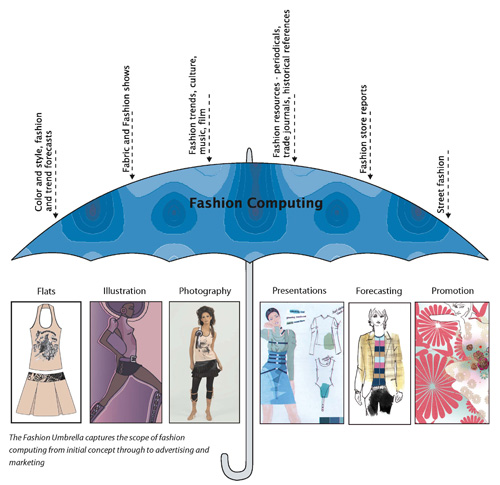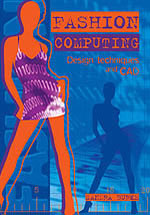Fashion Computing has become an essential component of the fashion designer’s portfolio of skills. This is the first book to comprehensively explain how to use fashion computing software to produce fashion designs and develop those skills. Through visuals and easy steps, you will learn the creative fashion computing design techniques used in the fashion industry internationally.
Specific computer software includes: Photoshop, Illustrator, CorelDRAW, Freehand, PowerPoint, Gerber and Lectra Systems.
Target Market: Universities, Fashion Schools, Degree, Certificate and short courses, general readership.
Support Material: An INSTRUCTOR’S GUIDE in the form of POWERPOINT SLIDES is available on request. Please click HERE or go to the INSTRUCTOR COPY page to complete the request form.
First Chapter/Excerpt:
The latest computer technology is having a huge impact on the way fashion designs are being created. Powerful graphics software offers the fashion designer creative tools and techniques to digitally produce their fashion designs, together with the capability to communicate internationally with the fashion industry electronically. Consequently, this digital revolution has developed a growing market for enterprising fashion designers and fashion illustrators with creative computing skills.
Graphics software, which includes drawing, image editing, page layout and web design, offers a multitude of tools and techniques. The fashion designer can use these programs to sketch a simple technical line drawing of a basic tank top or a highly detailed jacket, create the most amazing fashion illustrations, and develop dynamic presentations and page layouts for print and screen.
The computer is a powerful tool, an extension of your hand, and an aid to your creativity and visualisation. Graphic software adds another perspective to your work with a wide range of techniques for creative design development and presentation. Combining hand drawings and digitised visuals adds even more scope for innovation and personal style.
The aim of this book:
Fashion Computing – Design Techniques and CAD introduces you to the computer-aided fashion drawing and fashion design skills required by the fashion industry worldwide. Through visuals and easy steps, it explains how to use the most popular graphics software used in the fashion business. It demonstrates fashion drawing, fashion design and fashion presentation techniques and explains how to develop digital communications using powerful computerised tools. Fashion Computing will clearly demonstrate how your computer skills can be applied to the world of fashion and the fashion design process.

The fashion computing umbrella:
Fashion Computing – Design Techniques and CAD will take you through the following computing techniques:
- Create specification/technical sheets for samples and production
- Create fashion illustrations and fabrics
- Create fashion presentations – mood/concept/theme, fabric, colour, design, illustration, trend forecasting etc.
- Design promotional material for websites, marketing and branding, business cards and logos
To make the most of this book you should have some basic fashion drawing and computing skills.

